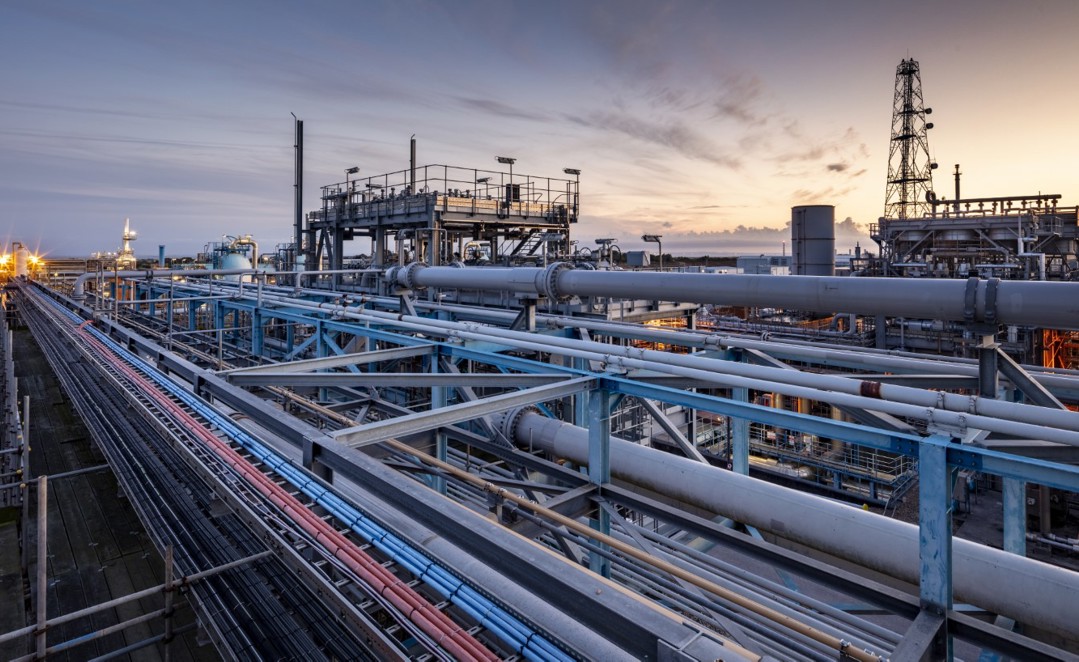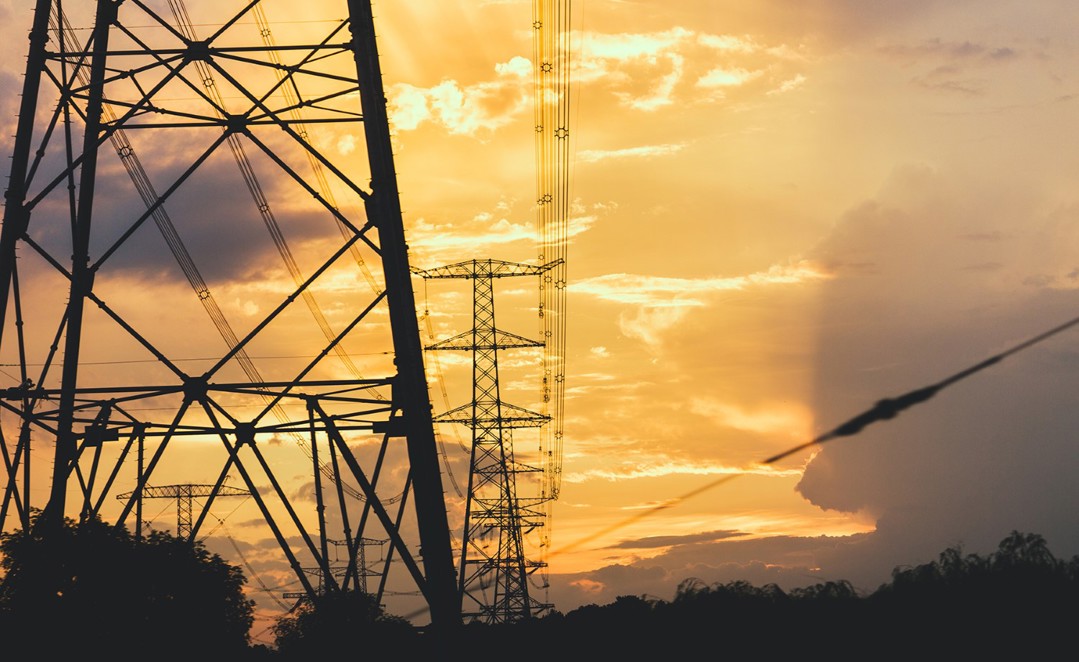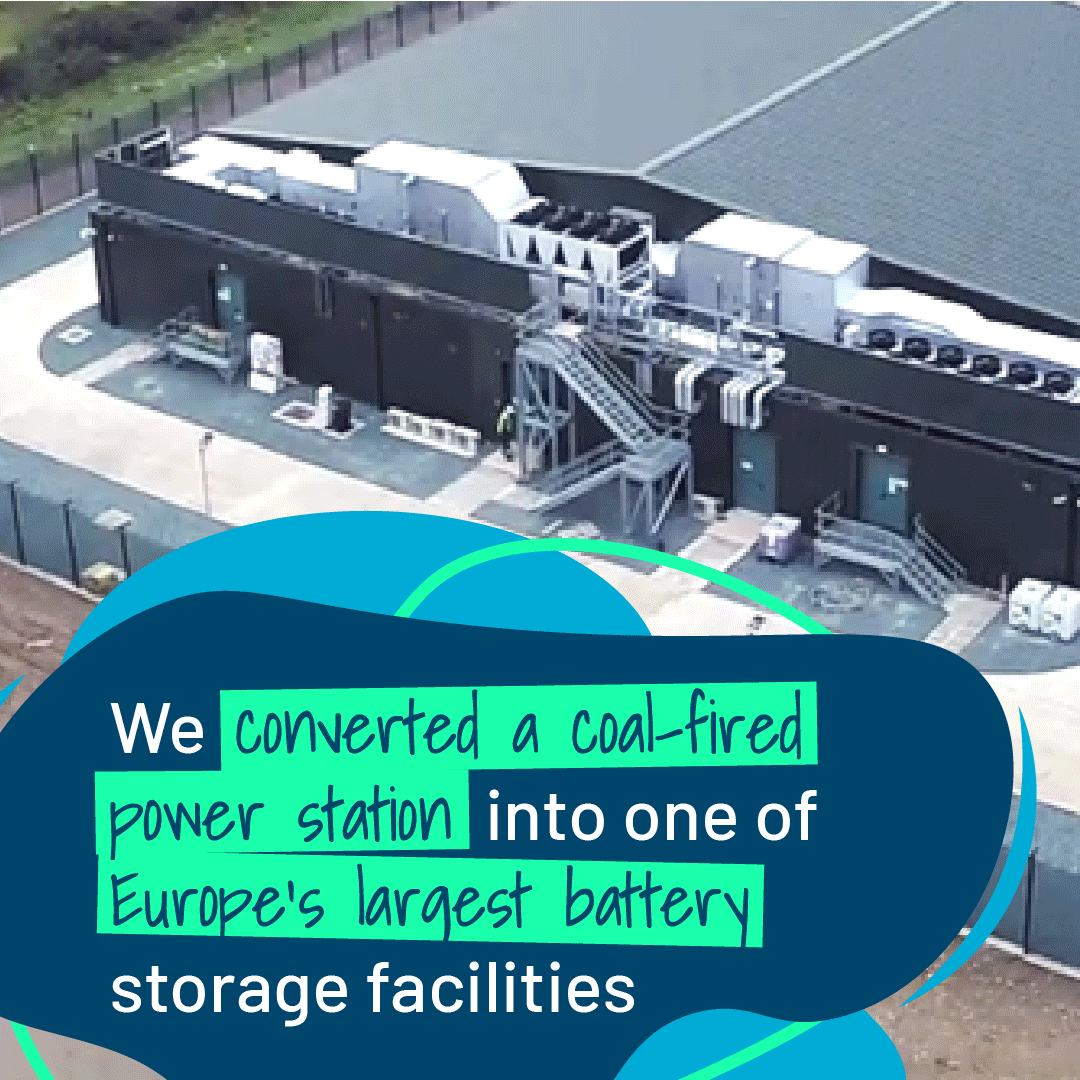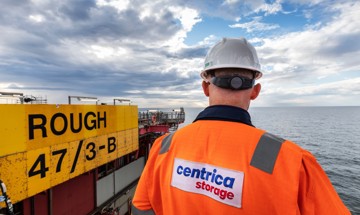The transition to a power system primarily made up of renewables brings incredible opportunities and significant challenges.
More renewable energy is being brought online every day - and we’re playing our part to ensure it goes smoothly.

The reality of our energy system
On 12 December 2022, National Grid took the decision to put three coal power generators on standby because they were concerned that electricity demand would outstrip supply during a cold snap.
It is the type of decision the grid operator makes several times a day every day, balancing supply and demand and ensuring the grid maintains a steady frequency. One wrong turn and the results can be catastrophic, leaving homes and businesses without the power they rely on.
Fortunately, on that day in December, we didn’t experience blackouts and the coal fired power stations were stood down, but it demonstrated two things - the importance of maintaining balance on the grid and how close we remain to relying on some of the dirtiest fossil fuels to keep the lights on.
It’s clear that we cannot keep relying on these types of fuels and as a country, the UK has a legally binding commitment to reach Net Zero by 2050.
To achieve this, the power system of the future will need to change dramatically - moving away from fossil fuels and towards renewables like wind and solar, but completely replacing fossil fuels presents challenges.
Renewable Intermittency
Renewable trade-off
Renewable energy is great.
It doesn’t produce greenhouse gas emissions, diversifies our energy supply, promotes energy security, and creates jobs in manufacturing, installation, and supporting industries.
That said, renewable energy has one big challenge… intermittency.
Intermittency refers to the unreliability of renewable energy, and more specifically the fact that we can’t pick and choose when and how much renewable energy is generated at any given time.
Power from wind turbines and solar panels is only generated when the wind blows and the sun shines and how much is generated is dependent on how hard the wind is blowing and the sun is shining at any given moment.
As renewables make up an increasingly large part of our energy mix and fossil fuels are phased out, we lose more and more control over our energy generation to the elements and the weather, making our energy system more volatile and unpredictable.
This is a challenge because it makes balancing the grid more difficult.

Balancing the grid
The Balancing Act
National Grid is constantly engaged in a balancing act to ensure supply equals demand.
If demand on the grid outstrips supply, the supply of energy going into the grid must be increased (or demand decreased) and if demand is lower than supply, then the supply needs to be reduced (or demand increased) to match it accordingly.
If the balance isn't maintained, the end result will be widespread blackouts and significant damage to infrastructure.
Most balancing is done primarily through the supply side with National Grid working with flexible energy generators to adjust supply to match demand.
Historically, this has been achieved by either topping up low carbon energy sources, such as solar, hydroelectric and wind power with fossil fuel generation, or by reducing generation from fossil fuels if demand is lower than supply.
In a net zero world these environmentally harmful fossil fuel sources of energy will need to be replaced and we won’t be able to rely on them.
The energy deficit caused by taking fossil fuels out of the energy mix can be addressed by expanding renewable capacity, but the flexibility provided by fossil fuels will be phased out with them, replaced instead by the unpredictability, volatility, and intermittency of renewables.
It's clear that as more and more renewables are brought online and make up a larger part of our energy mix, intermittency and the fluctuations associated with renewables will need to be addressed.
Our plan to do this is by investing into flexibility measures.
Flexibility Measures
Bringing more flexibility to the grid
Flexibility measures help balance the grid by enabling adjustments to electricity supply and demand.
These measures are broadly categorised into two types, often being referred to as either supply or demand side measures, depending on whether it's the supply or demand for power that is being adjusted.
Traditionally, the grid has mostly relied on supply-side measures working with flexible generators to ensure supply matches demand, but it's becoming increasingly clear that the demand-side has an important role to play.
While the supply side is primarily the domain of generators, the demand side belongs to consumers with demand side response (DSR) becoming more important than ever.
In the simplest terms, DSR is simply a change in power consumption habits by consumers.
Households, hospitals, factories, and others on the demand side can help balance the grid by turning demand up, down or shifting it so that it better matches the available energy supply. These actions can either be behavioural or can be automated through smart or intelligent connected devices or appliances.
For households, this could be as simple as charging electric vehicles when there’s plenty of cheap renewable energy or choosing not to do laundry when electricity is scarce. On its own, a single household won’t make a significant impact, but there’s strength in numbers.
With the launch of National Grid’s Flexibility trial in winter 2022, we’ve seen the first mass market live trials of behavioural demand side response for households in the UK, and they've shown a lot of promise.
British Gas customers via our PeakSave demand flexibility scheme alone managed to save enough energy to power 750,000 homes for one hour demonstrating the potential that DSR could play in balancing the grid.
Centrica has also been investing in adapting our market leading flexibility and Virtual Power Plant platform to work with devices in the home. Using the latest AI and optimisation technologies, we are able to connect communities of energy users in revolutionary new ways.
Through partnerships with device manufacturers and installers, we already have close to 12,000 (almost 50MW) home batteries, EV chargers, heat pumps and electric heating appliances across UK, Belgium and Netherlands providing fully automated balancing services to the network operators.
Under British Gas Zero, we're also integrating this intelligent energy platform with our Hive and British Gas energy platforms to launch next generation consumer propositions for EV, battery and electric heating customers in the UK.
We're also exploring and investing in many net zero aligned flexible electricity generation and storage opportunities to support from the supply side such as our battery storage facility in Roosecote and through our optimisation capabilities through our Energy Marketing and Trading business.

We already have an operational portfolio of low carbon, flexible generation assets in the UK and Ireland, and are progressing several new opportunities, with over £400m of in-train projects, including hydrogen and more battery storage.
The road ahead
The transition to net zero and bringing more renewables online brings incredible opportunity, but also significant risk, especially when it comes to balancing the grid and keeping the lights on.
The power grid and energy system of the future will need to be supported both by flexible energy generation like hydrogen, battery storage facilities, as well as by consumers adjusting their consumption to be more in-line with the intermittency of renewables.
Flexibility measures will play a key role in creating a stable energy system and at Centrica we're exploring and investing in both the supply and demand sides such as converting a gas-fired power plant into a green energy hub with battery storage facilities and pioneering the latest in DSR technology and propositions.
We're excited for the opportunities that the transition to net zero brings and look forward to working with our colleagues, partners, and customers to ensure a fair energy transition that doesn't leave anyone behind.

Blog
Chris O'Shea - we must create a skills system that will produce the workers the UK needs to build our low carbon future
Sustainability
Powering up the hydrogen revolution
Sustainability

Blog
Let’s grasp the opportunity a secure, Net Zero energy future affords
Sustainability

Blog
"It’s our role to take everyone on the journey towards Net Zero living"
Sustainability
Progressing our People and Planet Plan
Sustainability

Case Study
Centrica's Climate Transition Plan
Sustainability




